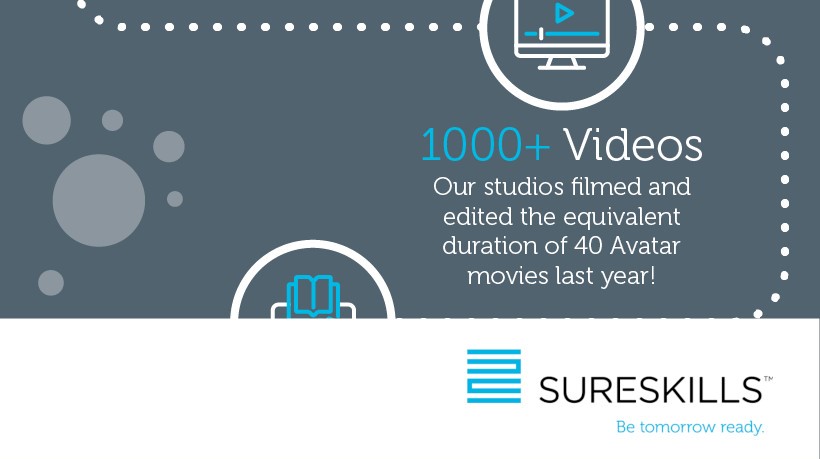Top Trends in Learning and Development.
(Note: This is the first installment in a 5 (and a half 😊) part series that defines the learning landscape – from most relevant trends to practical tips for how to become a better learner. You can also find podcast versions of these articles – and a host of other conversations with inspiring L&D leaders! – on the Learn to Grow Podcast)
The world of learning and development is vast and complex, so let’s start by looking at some of the most prominent trends and talking points right now. We can also look at the reason behind some of these trends, the conceptual plumbline that ties them all together.
Here are three of the most important (and interesting!) trends in L&D:
We Change Jobs, Roles, and Careers More than Ever
If you are between 25 and 34, your average tenure is a mere 2.8 years. Think about that. That means we change roles, we change jobs, we change industries, we change careers, more than we ever used to.
Some of this driven by the so-called "Gig" economy, as employees embrace the flexibility of short-term contracts while employers lean increasingly on a remote or extended workforce of highly talented professionals – a network of consultants, outsourcing partners, and vendors – to vary the range of skills available to them as they adapt to rapid change.
It also means we rely increasingly on our ability to network and communicate with new leaders and teammates, adapt to new environments more frequently, and apply our skillset in varied ways to new projects and tasks.
The Great Resignation Has Shaken Things Up
Not only is that 2.8 year tenure short, it’s likely to shrink in the coming years thanks to the phenomenon we are experiencing right now called "The Great Resignation".
The numbers on this one are staggering.
In November of 2021, 4.5 million people out of a workforce of about 160 million or so, voluntarily quit their jobs (US Bureau of Labor Statistics). And in a McKinsey report, more than 40% of employees said they were “likely to leave in the next six months”.
The past couple of years have been a jolt to our automatic ways – we went digital in two weeks when many worried it might take years. If so much can change in such a short time, many people asked, “What else can I change?”.
For example, why commute daily and convene in expensive open-plan offices with one-size-fits-all practices? Why not optimize our home workspace, collaborate on platforms as a work hubs with quick, informal check-ins, and flexible hours and locations?
One of the things it seems people began to reconsider is whether or not they want to continue doing the job they have. Which begs the question – if people are motivated to leave their job in search of something else, what are they looking for?
And it turns out the answer is pretty simple – they want autonomy and flexibility, they want a healthy inclusive culture, and they want opportunities to learn and grow.
And they have voted with their feet at a time when they have power over employers, who must now demonstrate that they can provide the culture these people are looking for.
AI will Revolutionize the Future of Work…and it’s a huge Opportunity
According to the World Economic Forum’s Future of Jobs Report 2020, AI will replace 85 million jobs by 2025 – which, by itself, is a little alarming. But what is often overlooked is that it will create 97 million jobs in that same timeframe.
That doesn’t seem so bad, right? In short, it’s not, but there’s a catch.
The 97 million jobs that will be created will require vastly different skills that the 85 million jobs that will be displaced, so it will not simply mean wrapping up one job and grabbing a new one – at least not without some amount of learning, development, upskilling, reskilling.
Anything that can be automated, will be automated – it’s already happening. AI can adjust insurance claims by checking claims against historical data, reducing fraud and providing stronger basis for financial adjustments. Robots help surgeons replace joints with more accuracy and efficiency than previously possible, small business owners handle their own accounts thanks to AI-powered accounting software. And that’s before we even explore things like the impact of autonomous vehicles on the trucking industry.
Change is not just coming, its already here.
To take advantage of new and emerging roles, we will need to cultivate the skills that can’t be automated. Those skills include design thinking, communication, collaboration, leadership, critical thinking, the list goes on. And these, companies agree, are the most in-demand skills right now.
Just because the skills we need are uniquely human, doesn’t mean we are already good at them! They are like any skills, they need to be learned, applied, practiced, and refined in order to improve competence.
And to do that, we will need a massive upskilling and reskilling effort on the part of organizations, individuals, governments, educational systems – everyone will play a vital role.
The Only Constant? Change.
If we’re looking for unifying themes here, it’s change. The only constant is change.
Change for individuals and organizations, change as we navigate the great resignation, change as roles evolve and companies pivot, change as AI revolutionizes the work we do as humans.
What does this mean?
There is a massive need for upskilling and reskilling – a massive need for learning and growth.
Learning has never mattered more.
It’s how individuals will make themselves viable in the job market in the future – it’s how organizations will adapt to inevitable changes in the coming years.




